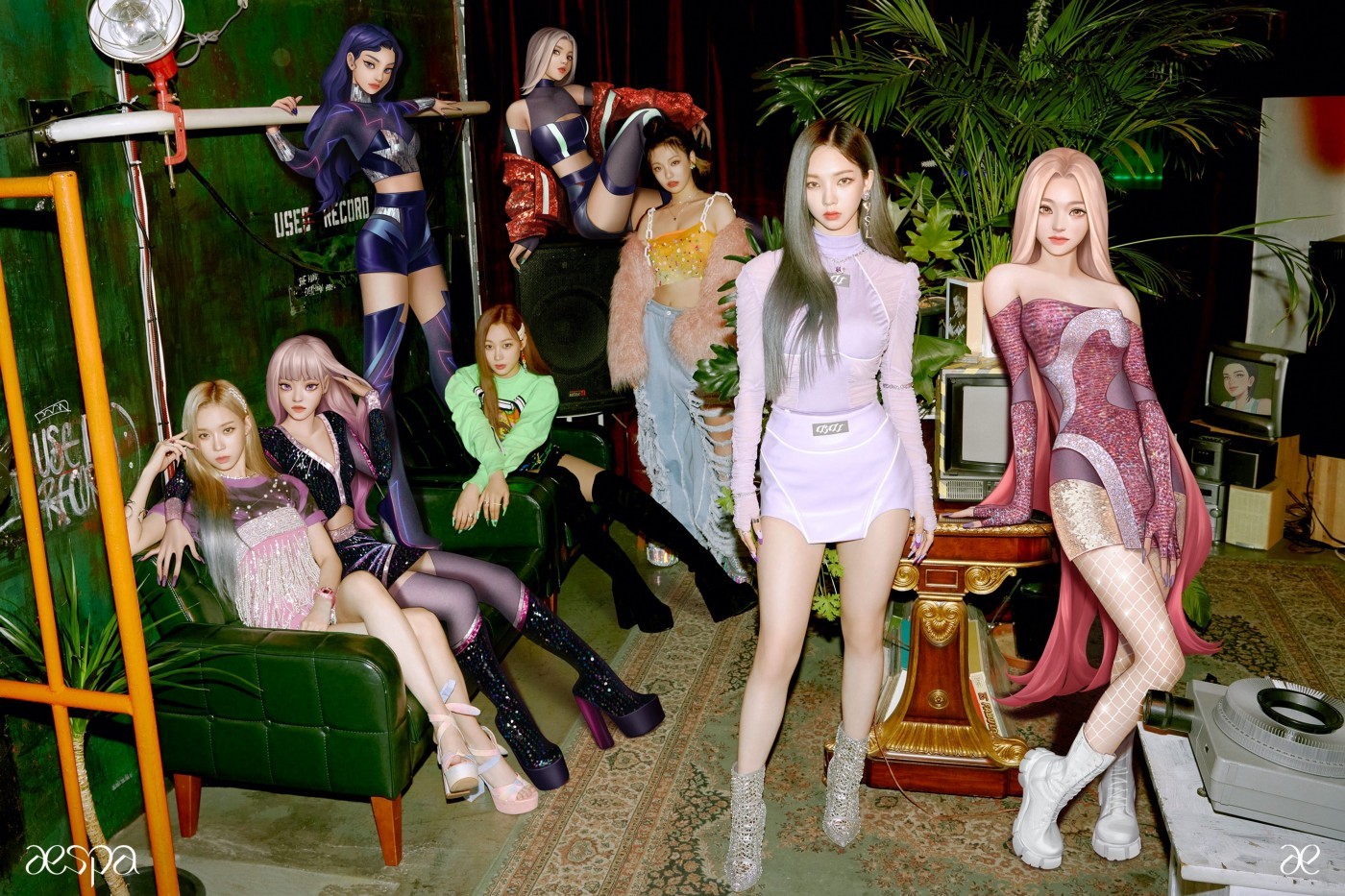Virtual humans are garnering the global spotlight these days. Many are already familiar with the artistic technology as it is actively utilized in the entertainment and advertising industries. On account of the appearance of the metaverse, an integrated network of 3D virtual worlds, the virtual human industry is gaining more and more popularity. So, what is a virtual human and why is it a burgeoning trend amongst the MZ generation?
 |
| ▲ Girl Group Aespa with Their Own Virtual Human Characters (Photo from Yonhap News) |
A virtual human refers to a computer-generated three-dimensional character that is created by integrating artificial intelligence technology with deep learning technology. It is capable of speaking, dancing, and singing just like humans. This enables a virtual human to represent an actual human being in the virtual world. The first virtual human to appear in Korea was a cyber singer named Adam that made his debut in 1998. He performed by appearing on screen and singing with a voice-over by an unknown singer. It was considered strange at first, but soon became an online sensation. After Adam’s initial popularity fizzled, the resurrection of virtual humans was credited to Aespa, a Korean girl group formed by SM Entertainment. They drew the public’s interest with the debut of their avatars, ‘ae.’ Today, virtual humans are also playing the role of virtual influencers. Rozy is the first virtual influencer in Korea and received the attention of the public by making an appearance dancing in an insurance company commercial. The virtual character is now being used as a model for various products and is constantly broadening her boundaries. She also actively communicates with her 140,000 followers on Instagram as an influencer. Virtual humans are also extensively used in other countries such as Japan. Kizuna Ai is a Japanese virtual human who debuted as ‘the world’s first virtual Youtuber’ and gained 1 million subscribers in only a year.
The Economist, a British weekly magazine, selected Virtual Humans as a technology to watch in 2022, indicating that the possibilities for the development of this industry are endless. The most powerful advantage is that the virtual human can do things that a real human can't. Therefore, industries can eliminate risks by replacing humans with virtual ones. It is because of these advantages that the entertainment industry is investing heavily in virtual human technology. They believe it will significantly reduce the risk of 'uncertainty', a factor that is critical to the entertainment industry. One of the most evasive issues in the entertainment industry is the decline in sales due to the loss of celebrity image, but because a virtual human does not age, and there is no risk of controversy because it is a fictional character, the willingness to adopt a virtual character has gained in popularity. They are also significantly less expensive to develop and maintain than casting a live celebrity. The possibilities are endless with virtual humans, while the abilities of humans are limited. Moreover, they are being accepted more and more and no different from real celebrities. As a result, virtual humans are easy to introduce to any industry, and as technology advances, their areas of use are expected to expand further.
 |
| ▲ Virtual human Rozy is dancing in an insurance company commercial. (Photo from Branding in Asia Magazine) |
The Dankook Herald (DKH) developed a survey to learn how Dankookians (Students of Dankook University) feel about the rise in virtual human technology. We learned that most Dankookians have seen virtual humans in advertisements on television and YouTube, but are divided in their support for the characters. Those who saw virtual humans as a positive development believe their roles could surpass human beings. Since virtual humans are not real and do not have any constraints, they are able to perform high-level content and represent a variety of concepts, which humans cannot do. They predicted that the use of virtual humans’ in the entertainment industry will continue to grow. For example, virtual humans do not age, nor do they get hurt, thereby providing the entertainment industry with zero risk. Those opposed to the use of virtual humans in advertising and entertainment, see them as simple reproductions of humans but they lack ego, emotion, and personable characteristics. They believe that even though they look and act like humans, people will not be able to identify with them. The most prevalent concern raised was the fear that actual humans will lose their jobs and positions which can be a huge threat to society considering that unemployment is a worldwide issue.
Although the viewpoint toward virtual humans was sharply divided, many were still interested in making their own. They wanted to develop a character that was idol like, good-looking and full of personality. In terms of the future of virtual humans, some survey respondents said they will be limited because they are not actual human beings, but replied that their growth will continue due to technological development and their frequent use in media.
Currently, virtual humans are actively used in entertainment and advertising, and since it is possible to connect them with other technologies such as the metaverse, the industry is expected to develop further in the future. As the virtual human is emerging as a new trend with the MZ generation, it is critical for Dankookians and all others to pay close attention to its development.
김서현, 김경석, 이승준 dankookherald@gmail.com

![[Campus Magnifier] Let's Surf the Library!](/news/photo/202404/12496_1765_4143.jpg) [Campus Magnifier] Let's Surf the Library!
[Campus Magnifier] Let's Surf the Library!
![[Campus Magnifier] Let's Surf the Library!](/news/thumbnail/202404/12496_1765_4143_v150.jpg)





